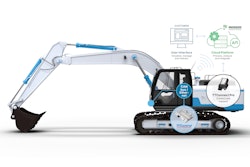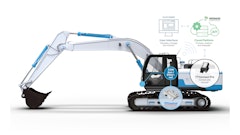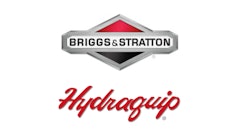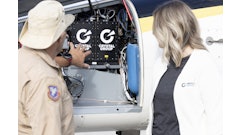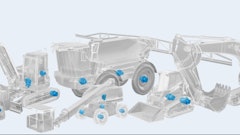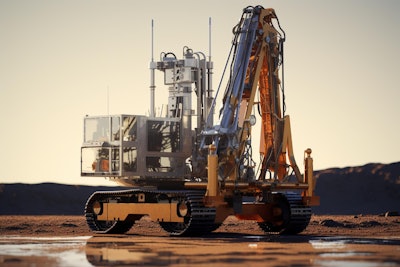
*This content is sponsored by Truck1.eu.
The blasthole drill market continues to move toward automated and semi-autonomous machines: “automatic” drill configurations already account for a significant share of global blasthole drill revenues, and that share is still growing.
For equipment manufacturers, system integrators and component suppliers, the question is no longer whether autonomous drilling will matter, but how fast it will diffuse beyond the largest mines, and what technical and commercial models will win.
Why Surface Drilling Autonomy Now Matters More Than Ever
The core drivers behind autonomous drilling rigs have not changed, but their relative weight has.
Safety and Workforce Exposure
Moving operators from benches and patterns into control rooms remains the clearest argument. Autonomous and tele-remote surface drills are being evaluated as part of a broader strategy to reduce exposure to fall-of-ground, flyrock and equipment interactions, and to align with ISO-based safety frameworks for autonomous and semi-autonomous systems.
Labor and Skills Constraints
Many regions now struggle to attract and retain experienced drill operators. Surface drill automation allows scarce expertise to scale across more shifts and more machines, while training simulators shorten the ramp-up curve for new hires and help standardise best practices.
Energy, Emissions and Productivity
As haulage and loading trend toward electrification, drilling has to keep pace in terms of productivity per kWh and per tonne CO₂. Automation packages make it easier to run drills closer to their ideal operating window — and to coordinate with emerging battery-electric platforms. New concepts in battery-electric drilling and bolting underline how autonomy and electrification are increasingly linked in product roadmaps.
Blasting and Downstream Stability
Better control of hole placement and depth improves fragmentation and reduces over- and under-charging. The economic effect shows up not only in drill KPIs, but also in crusher throughput, shovel efficiency and even mill energy consumption. For many sites, blasthole drill automation is becoming a lever for the entire value chain, not just for the drill crew.
In short, autonomous surface drilling is becoming a systems decision, not just a feature tick box on the rig. In practice, when engineering and procurement teams benchmark options, they increasingly consult live current drilling rig listings and other equipment marketplaces to see which mast configurations, hole diameters and control packages are actually available at today’s price points.
4 Practical Types of Surface Drill Automation in the Field
Across regions and standards documents, terminology can differ. But if you walk sites in 2025, most surface drilling automation deployments fall into four broad types.
1. Assistive automation on the rig
In assistive modes, the operator stays on board, but specific tasks are automated: auto-level, auto-mast alignment, auto-collaring, auto-drill to depth and basic pattern guidance. Modern rotary blasthole drills increasingly ship with these functions as “automation building blocks” that sit on top of conventional control systems.
For manufacturers, this level is now table stakes. The engineering question is less whether to offer assist, and more how modular and upgradable the assist stack is — for example, whether the same sensors and controllers can later support remote or autonomous modes without a major rebuild.
2. Tele-remote operation
Here, the surface drill is operated from a control room, either on-site or off-site, with live video and machine state data. The human still makes every tactical decision (collaring, drilling sequence, and so on), but does so away from the bench and the blast pattern.
Non-line-of-sight demonstrations — where a blasthole drill is controlled from a trade-show booth or a distant operations center — show how mature this mode has become on the networking and machine-control side. Tele-remote modes are increasingly specified as part of “operational readiness” in autonomous surface drilling projects, not just as a niche option.
3. Supervised autonomy
In supervised modes, the drill moves between holes, levels, collars and drills according to a pattern plan, while a human supervises several rigs and handles exceptions. One operator might monitor multiple screens, authorize state changes and intervene when the system detects anomalies such as unexpected ground conditions or obstacle alerts.
Technically, this demands tight integration of high-precision GNSS, inertial sensors, environmental sensing (camera/radar/LiDAR) and a state-based control system that knows when to hand decisions back to the human. It also requires clear procedures: who is allowed to start an autonomous cycle, how alarms are triaged, and how control is handed over in an emergency.
4. High-autonomy fleet operation
Higher-maturity levels appear when machines execute production goals under defined rules, with fleet-level coordination of paths, priorities and interactions. The fully autonomous SmartROC D65 deployment in partnership between Epiroc and Luck Stone is one of the clearest 2025 examples in this category: the drill rig executes complete patterns autonomously within a defined work area, while operators supervise the process from a remote control room and handle exceptions.
For OEMs, these types are less about labels and more about product strategy: platforms built purely around “assist” risk being outgrown quickly; platforms that can scale from assist to supervised autonomy and eventually multi-rig operation are far more attractive to operators planning for the 2030s.
How Manufacturers Package Autonomy by 2025
Although naming and branding differ, most drill OEMs now package automation in a similar way:
Base assist package — Auto level, auto mast, auto drill and pattern guidance bundled into a standard or near-standard configuration, often marketed as a way to increase consistency and extend bit life.
Remote and tele-remote options — Add-on kits that relocate the operator interface to a control room and integrate multiple camera views, drill status dashboards and ergonomically optimized controls.
Autonomy-ready hardware — Sensor suites, safety PLCs and networking hardware sized not just for today’s assist functions, but also for future supervised autonomy. This reduces the need for major hardware retrofits later.
Training and simulation tools — Dedicated simulators and “digital twins” of the rig and bench environment to train operators and supervisors in state changes, alarm handling and recovery from network or sensor faults.
Life cycle and retrofit paths — Clear statements of what can be upgraded in the field — for example, which existing rigs can move from assist to tele-remote or supervised modes, and under what constraints.
For design teams inside OEMs, the competitive edge increasingly sits in how cleanly these pieces fit together and how predictable the upgrade paths are over a 10- to 15-year life.
Beyond 2025: Where Autonomous Surface Drilling Is Heading
As 2025 closes, a few trends seem likely to shape the next five years of surface drill automation:
● Autonomy as a default option on mid- to large-size rigs.
Just as GPS guidance became standard on many earthmovers, “autonomy-ready” packages will increasingly be assumed on new drill platforms, even if customers initially operate in assisted or remote modes.
● Closer coupling with electrification and energy management.
As more battery-electric or trolley-assisted drills emerge, fine-grained control of duty cycles and energy use will depend on advanced automation. Expect more rigs where autonomy, energy storage and charging strategies are co-designed.
● More formalised safety cases and certification.
Regulators and insurers are likely to lean more heavily on standardised safety frameworks, pushing OEMs to provide clearer documentation of functional safety architectures, failure modes and human–machine interfaces from the factory.
● Data-driven procurement and resale.
With better production and maintenance data, operators will compare competing autonomous drilling offerings on actual cost per metre drilled and life-cycle productivity. Public marketplaces such as Truck1 that list detailed surface drill configurations — mast type, diameter range, control packages — will make these comparisons more transparent and will influence how manufacturers position their own new-equipment catalogs.
Conclusion
Autonomous surface drilling is no longer an experiment reserved for a handful of flagship mines. Fully autonomous rigs are now cutting patterns in quarries, manufacturers are productising training and safety, and standards bodies have converged on frameworks that make safety cases easier to construct and audit.
For the off-highway engineering community, the challenge is to treat surface drill automation not as a point feature but as a platform capability:
● architected from the outset for safe, standards-aligned operation;
● designed to scale from assist to multi-rig supervision;
● integrated into site data, networking and energy systems;
● and grounded in real-world economics and mixed-fleet realities.
Those choices, made in today’s design cycles, will determine which autonomous drilling rigs are still competitive when we look back at the end of the decade — and which ones are remembered as “interesting pilots” that never scaled.






